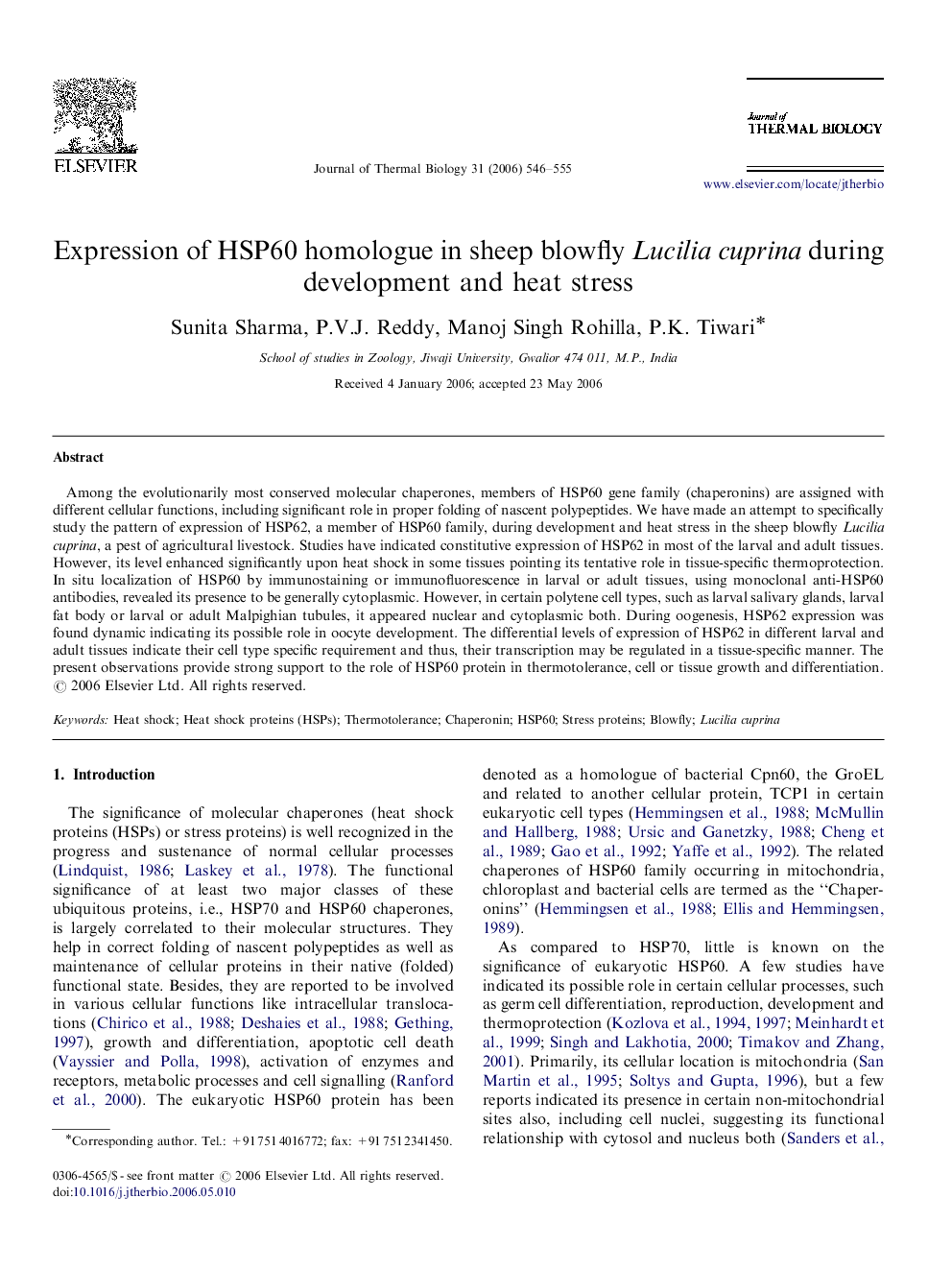| Article ID | Journal | Published Year | Pages | File Type |
|---|---|---|---|---|
| 2843720 | Journal of Thermal Biology | 2006 | 10 Pages |
Abstract
Among the evolutionarily most conserved molecular chaperones, members of HSP60 gene family (chaperonins) are assigned with different cellular functions, including significant role in proper folding of nascent polypeptides. We have made an attempt to specifically study the pattern of expression of HSP62, a member of HSP60 family, during development and heat stress in the sheep blowfly Lucilia cuprina, a pest of agricultural livestock. Studies have indicated constitutive expression of HSP62 in most of the larval and adult tissues. However, its level enhanced significantly upon heat shock in some tissues pointing its tentative role in tissue-specific thermoprotection. In situ localization of HSP60 by immunostaining or immunofluorescence in larval or adult tissues, using monoclonal anti-HSP60 antibodies, revealed its presence to be generally cytoplasmic. However, in certain polytene cell types, such as larval salivary glands, larval fat body or larval or adult Malpighian tubules, it appeared nuclear and cytoplasmic both. During oogenesis, HSP62 expression was found dynamic indicating its possible role in oocyte development. The differential levels of expression of HSP62 in different larval and adult tissues indicate their cell type specific requirement and thus, their transcription may be regulated in a tissue-specific manner. The present observations provide strong support to the role of HSP60 protein in thermotolerance, cell or tissue growth and differentiation.
Keywords
Related Topics
Life Sciences
Agricultural and Biological Sciences
Agricultural and Biological Sciences (General)
Authors
Sunita Sharma, P.V.J. Reddy, Manoj Singh Rohilla, P.K. Tiwari,
